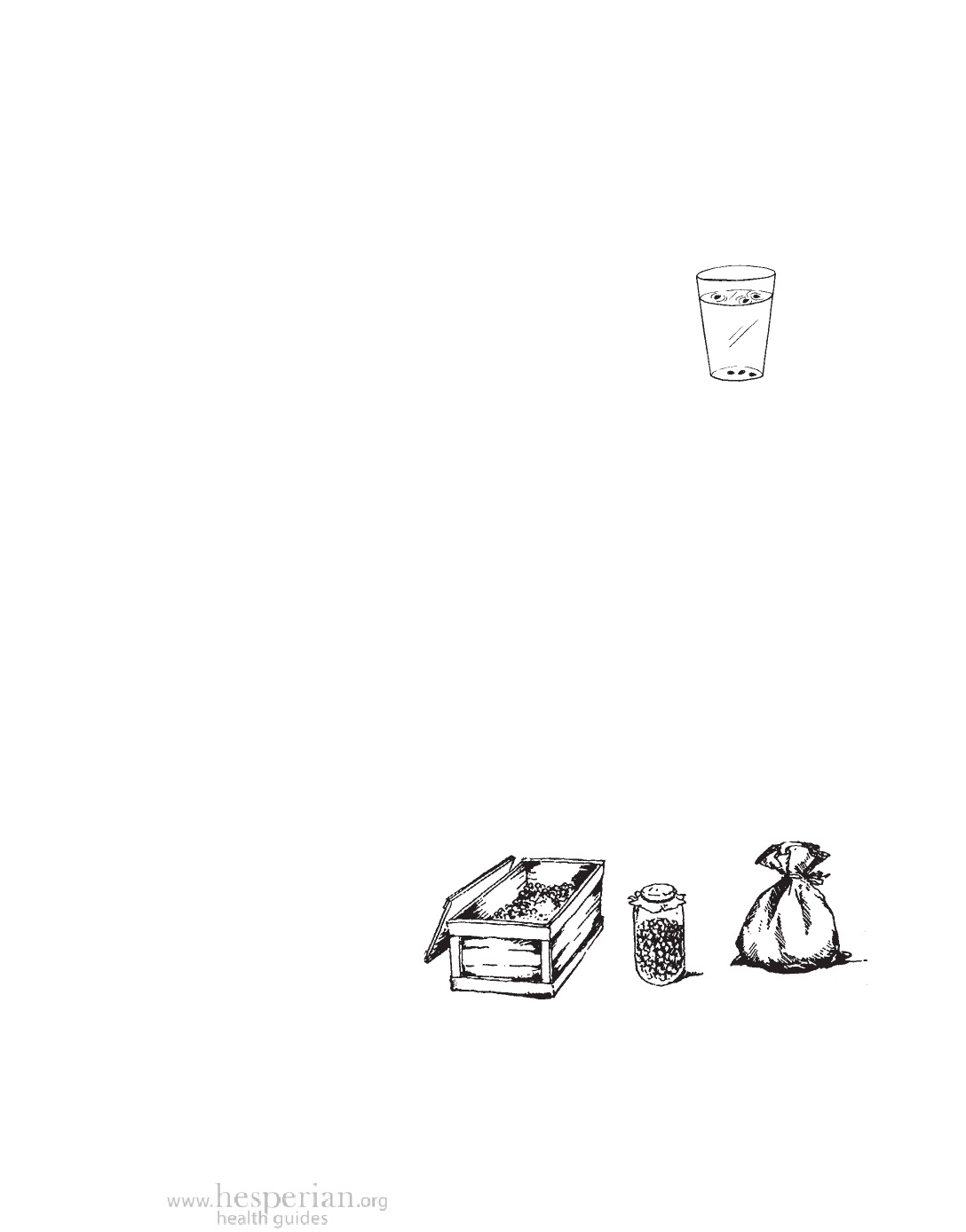
Saving Seeds 303
Saving Seeds
Many farmers produce their own seed by allowing some plants to mature and
then collecting the seeds. Saving seeds allows farmers to grow plants with the
qualities they want. Local plant breeding and seed saving are important to
preserve biodiversity and promote food security.
(For more about plant breeding, see Chapter 12.)
Selecting seeds
To make sure you have good seeds, collect them from:
• strong plants, free of pests and disease.
• plants adapted to the area. For example, if you
live in a cool area where a certain type of plant
grows, but you collect seeds from the same type
of plant that grows in a warmer area, the plants
may not survive the cool weather.
Put hard coated seeds in
a container of water. The
seeds that float will not
sprout. The seeds that sink
can be planted.
• plants with the qualities you want, such as size, taste, resistance to
drought, and so on.
• plants that grew some distance away from other varieties of the same
type of plant, to make sure the different varieties of plant did not breed
together.
Do not collect seeds that have fallen to the ground by themselves. Sweep under
plants to remove fallen seeds, and then shake the plant or tree to remove fresh
seeds. Then clean the seeds as soon as possible after collecting them, and sort
them to remove any seeds that are rotted or damaged.
Storing seeds
To judge how long each kind of seed can be stored, think about the conditions
they need to grow. For example, seeds from areas with a cold or dry season
usually can be stored for months or
years, because they need the right
conditions to sprout. Seeds from
areas that are hot and rainy
most of the year will not
store well, because they can
sprout any time. Seeds with
hard shells usually can be
stored more easily and for
longer times than seeds with
soft shells.
Most seeds should be stored in a cool, dry, dark place,
with some air flowing through them, or they will rot.
A Community Guide to Environmental Health 2012